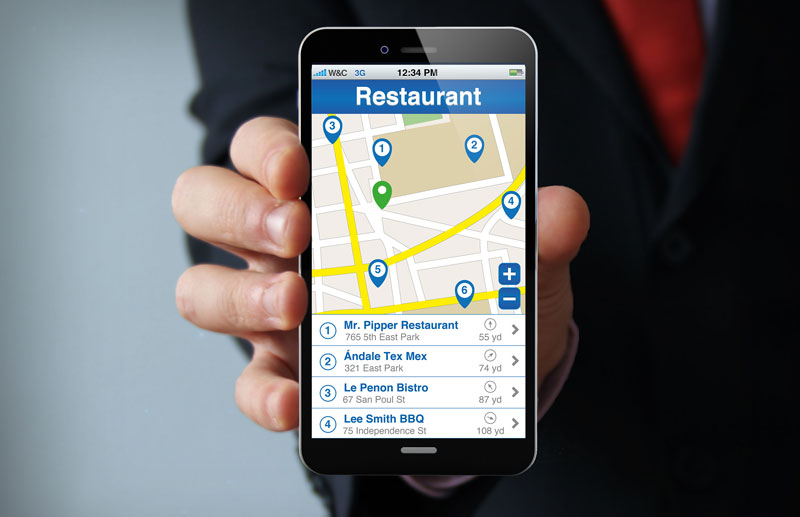By Andrew Oziemblo, Founder & CEO of Chicago SEO Geeks, the digital marketing & SEO agency helping businesses achieve long-term growth goals.
“Siri, find a sushi restaurant near me.” If, in recent years, you’ve found yourself searching for local businesses or products with voice or written commands like this one, you’re certainly not alone. As it turns out, these types of local searches are becoming the new norm for how people discover products, places and services around them. In fact, from 2013 to 2017, there was a whopping 900% increase in “near me” searches, and there has even been a 500% increase in “near me” mobile searches that contain a variant of “can I buy” or “to buy” over the last two years.
So, what do these huge increases in local searches mean for your business?
For companies that take advantage of them, it means new business — and a lot of it. Recent reports have shown that 34% of “near me” searches done via desktop and tablets result in in-store visits, and 50% of “near me” Google searches done via mobile also result in a store visit. A senior product manager at Google reported that there are “millions of user searches for local businesses every single day,” which translates into “billions of local searches each month” and delivers hundreds of millions of calls and billions of driving directions.
Search is constantly evolving, and this new era of local and voice-focused search is transforming digital marketing for businesses once again. And for companies with brick-and-mortar locations or local services, it’s absolutely crucial to adapt their digital marketing efforts for local searches. Here are a few easy ways any business can get started:
- Claim your business in online directories
Recently, Google has been placing a heavy emphasis on its “Google My Business” tool, which helps businesses verify their local listings and information and allows owners to respond to customer reviews all in one place. Without a doubt, the easiest and cheapest step any company can take to show up faster in local directories and in map searches is simply by adding or claiming your business on Google Business.
It’s completely free and can be completed in two simple steps: First, go to the Google Business website and enter listing information about your business. Once that’s completed, Google will send you a postcard in the mail with a verification code. When that arrives, all you need to do is sign back into Google My Business, enter the verification code, and you’re all set.
When your business is listed on Google, you’ll immediately start appearing in “near me” searches and map searches — which will directly impact your bottom line.
Once you have your business listed, you should aim to get it placed as high as possible in the local search results. This can be done if your business has a lot of great reviews — so be sure to solicit reviews from happy customers to give your business an extra boost in local searches.
- Add rich snippets and schema markup to your local pages
This part may seem a bit more complicated for those who are not SEO-savvy, but the final results are well-worth this extra bit of work. Google’s rich snippets work by extracting information like business hours, location, social media pages and more from your website to display on your site’s listing in the search results. Adding this information makes your business look more attractive in the Google search results page, thus making users more inclined to click on your page over another business.
Schema data helps search engines acquire more information related to your business and present them in the form of rich snippets. Schema data should always include important details you’d like to show up in searches, including the type of company, website, address, official logo, preferred description, social media accounts, and your unique identifying URL.
SEMRush has a great tutorial on how to write this code for your website and allow your business to show up in the Google Knowledge Graph. SchemaApp also has a user-friendly template that shows you how to label and write this data within your site. Once done, these rich snippets and schema data will make your site stand out from the rest of the pack, getting you more clicks and new business!
- Optimize your website for mobile users
Google can tell which device a visitor is using to navigate the internet, and prefers to give users results based on that device. And as mobile search users are expected to increase to 221 million by 2021, it’s more crucial than ever that your site is fully optimized for mobile users and searches from mobile devices.
If you’re not sure of how mobile-friendly your website is, the first step you can take is to check Google’s Mobile-Friendly Test. This tool will show you if your website is already optimized for mobile, or if not, it will show you the reasons your page failed. For example, small text, unresponsive design, and links too closely together, to name a few. Once you have Google’s suggestions on how to better optimize your site for mobile, you can either try to implement the changes yourself or hire an outside agency to help you optimize it without going through the hassle yourself.
Common ways to optimize your website are to avoid software like Flash; use large text that doesn’t require the user to zoom in; use a responsive design that sizes the content to the right screen size so users can scroll vertically instead of horizontally; and place links far enough apart that it’s easy for mobile users to tap on them.
Another option is to build a separate site built just for mobile, with its own separate URL. These pages are often fairly simple and easy to build; the only downside is that you will have to different pages in which to direct your customers, which can sometimes cause confusion. However, if you don’t have the resources to optimize your full website for mobile, this can be a great alternative choice.
- Optimizing for voice search
Voice search is the next big thing in digital marketing — and in fact, the phenomenon has already arrived. 40% of all adults already use voice search at least once per day, and it’s expected that by 2020, 50% of all searches will be through voice. And according to the National Public Media, there are already around 43 million smart speaker users in the U.S. alone.
We can only expect these numbers to grow in the next few years, meaning that businesses of all sizes need to adapt quickly. Voice searches often include questions like:
-
- “Where is the closest BBQ place near me?”
- “Alexa, where is the closest gas station?”
- “Okay Google, what restaurants are near me?”
- “Alexa, find a public pool near me”
- “Okay Google, find a printing service near me”
To get ahead of the voice search wave and ensure smart devices start recommending your business first, you should ensure that your website and Google Business profile pages answer any questions like the ones above which you foresee being asked by voice search enthusiasts. By listing out clear answers to these questions on your brand’s website and social media pages, you can help give your business a boost in voice searches. In fact, 20% of mobile queries are already voice searches, according to Google.
By making sure all of your pages are adapted for local search, mobile-friendly and voice search-friendly, you can ensure you’ll start ranking higher than your competitors and bring in new customers in this new era of digital marketing.


